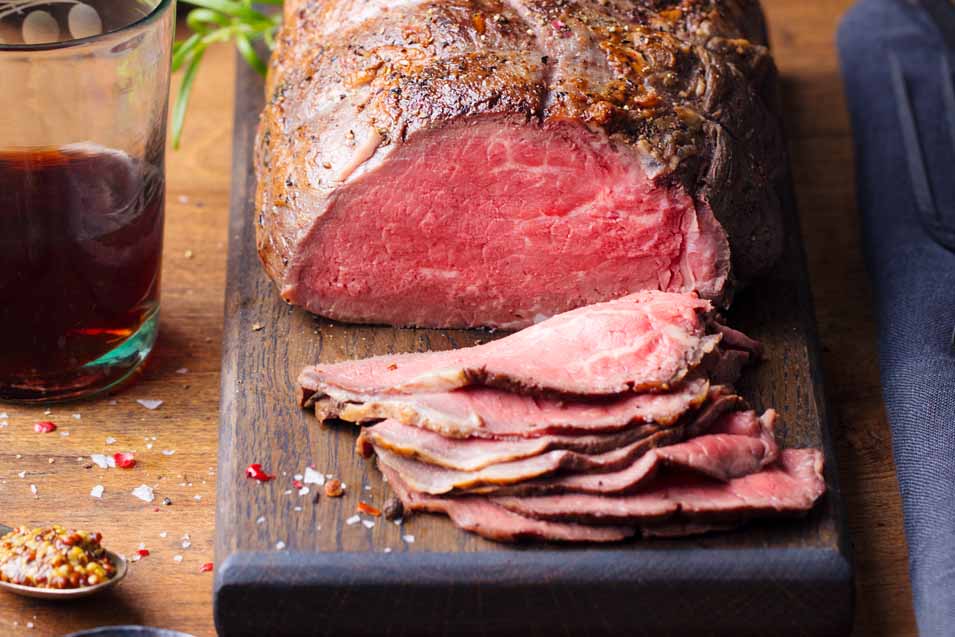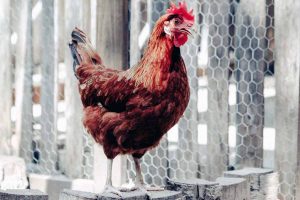It’s no secret that dogs and humans love many of the same foods. For example, if you are a meat lover, it’s a safe bet that your dog is, too. Dogs are not obligate carnivores, as cats are, but meat plays an important role in their diet. If you’re planning on enjoying some roast beef, you may want to set aside some for your canine best friend – as long as you take a few precautions.
Nutrition
It might surprise you to learn that lots of different cuts of beef can be used for “roast beef.” If supply chain issues and inflation are causing you problems, you can cook a good roast beef with any of the following cuts of beef:
- Prime Rib Roast
- Shoulder Petite Tender
- Sirloin Tip Center Steak
- Bottom Round Steak
- Eye of Round Roast
- Sirloin Tip Roast
- Chuck Roast
- Beef Rump Roast
All of these cuts are beef but they can vary in leanness and other ways. The best choice can also vary depending on the occasion, whether it’s a fancy dinner or a weeknight.
Nutritional values will also vary, depending on the cut chosen. You can find the nutritional values for dozens of beef roasts on the USDA nutritional site. Here’s a look at “Beef, loin, bottom sirloin butt, tri-tip roast, separable lean only, trimmed to 0″ fat, all grades, cooked, roasted.”
One of these roasts is estimated to weigh 569 grams (1 ¼ pounds). One serving is said to be 85 grams. This kind of roast is low in sodium (prior to preparation). It’s a very good source of protein, niacin, and selenium. It’s also a good source of vitamin B6, vitamin B12, phosphorus, and zinc. However, it is high in cholesterol.
This kind of roast beef has 41 percent fats and 59 percent protein.
One serving contains 155 calories. It has 0 carbs, 0 dietary fiber, 0 starches, and 0 sugars. However, one serving does contain 7.1 grams of fat. It also has 2.6 grams of saturated fat, 3.6 grams of monounsaturated fat, and 0.2 grams of polyunsaturated fat. And, it has 22.7 grams of protein.
You are probably aware of the benefits of good quality meat such as roast beef, especially from lean roast beef. It’s low in calories, low in fat, rich in protein, and rich in minerals that the body needs, such as iron.
There are cuts of beef that are leaner than others. According to the Mayo Clinic, the leanest cuts for roast beef include:
- Eye of round roast and steak
- Sirloin tip side steak
- Top round roast and steak
- Bottom round roast and steak
- Top sirloin steak
Can Dogs Have Roast Beef?
Yes, dogs can have roast beef, with a few caveats. Roast beef – most beef – is good for dogs. However, you have to make sure that it is plain. Salt, onions, garlic, and many other herbs and spices are all dangerous for dogs. Onions and garlic, in particular, can be toxic. Too much salt can cause serious problems. For these reasons, if you want to give your dog some roast beef, make sure that it doesn’t contain any of these additions.
Likewise, dry rubs and sauces are often loaded with some of these same herbs and spices, including onions and garlic, that are harmful to dogs. Don’t give your dog roast beef that has been seasoned or marinaded with these ingredients.
Any bones cooked in or with roast beef is also unsafe for dogs. Cooked bones are usually brittle so they pose a hazard to dogs that try to eat them.
In addition, some kinds of roast beef are high in fat. Trimming the fat off the beef helps but even so, some beef has fat marbled throughout the meat as a source of flavor. Your dog would no doubt love to eat this meat but it doesn’t take much of this fat to cause problems.
Too much fat from roast beef, or too much fat in general for your dog, can lead to pancreatitis. This is especially true if your dog is not used to eating much fat in his diet. Your dog can develop an upset stomach, gas, diarrhea, and he might vomit.
It your dog eats too much roast beef with a lot of fat he could develop pancreatitis. Pancreatitis in dogs occurs when the pancreas (a small organ that sits behind the small intestine and the stomach) is inflamed and swollen. This can occur if your dog eats too much fat and the enzymes in the pancreas go berserk. The purpose of the pancreas is to help dogs digest food and regulate their blood sugar.
Signs that a dog may have pancreatitis include:
- Hunched back
- Repeated vomiting (either several times within a few hours or periodically over several days)
- Pain or distention of the abdomen (dog appears uncomfortable or bloated)
- Diarrhea
- Loss of appetite
- Dehydration
- Weakness/lethargy
- Fever
If you notice these symptoms, you need to contact your veterinarian. Pancreatitis can be life-threatening.
Now that we’ve scared you, you should be able to give your dog roast beef without terrible things happening. (We have to provide this information because it might save a dog’s life somewhere.) If you give him roast beef in small amounts, keep the fat to a minimum, and avoid dangerous herbs and spices, there is no reason that your dog can’t enjoy some roast beef.
How to Cook Roast Beef
If you have never cooked roast beef before, it’s not that difficult. We do suggest that you follow a good recipe but the basic preparation and cooking are fairly simple.
After you have chosen your roast at the grocery store, you should slice off any portion of the roast you would like to cook for your dog. You can prepare it separately from your own roast. This way your dog’s meat won’t have any added salt or seasonings that might be harmful to him.
For your own part of the roast, you can season it or marinade it before cooking. You can do this up to 24 hours ahead of time and keep the meat in the refrigerator over night. As long as you cook your roast beef separately from your dog’s part of the meat, you can add anything you like to it.
Experts also recommend that you use a meat thermometer while cooking the roast in the oven to make sure the internal temperature reaches 145 degrees (medium/pink inside), and rest it for at least three minutes. It will continue cooking while it rests. For a well done roast (brown or grey inside), the thermometer should reach 160 degrees.
For your dog’s meat, you can cook it for the same amount of time that you cook your own. However, the meat should be left plain. Make sure that you do not add any salt or other seasonings to the meat.
There are some food toppers and seasonings made for dogs that you can add to your dog’s part of the roast if you would like to jazz up his meat a little. They are safe for dogs to eat. Most dogs are probably more than happy to enjoy their roast beef plain. It’s a very lucky dog that gets to eat roast beef!
It’s fine if you want to cook your dog’s meat in a separate pan in the oven at the same time you are roasting your own meat.
How Much Roast Beef Can You Give Your Dog?
Since even lean roast beef can contain some fat throughout the meat, it’s best to only give your dog a small amount of roast beef at any one time. Roast beef should be kept as a very special treat for your dog and not something that he gets at every meal. It shouldn’t replace your dog’s regular meal either.
Most dogs get the nutrients they require from complete and balanced dog foods. If you give your dog hunks of meat as a substitute for their meals, you will create an unbalance in their nutrition.
With the roast beef example we used earlier to look at nutrition, 85 grams contained 155 calories. That 85 grams is about three ounces. That is considered to be one serving for a human. That would be plenty for most dogs though the dogs might disagree. You can adjust the amount based on the size of your dog.
How Often Can You Give Your Dog Roast Beef?
Roast beef can be a very healthy part of your dog’s diet as long as it’s plain and you give it to your dog in small amounts. Giving it to your dog as a special treat once or twice per week would be safe as long as you try to keep the fat to a minimum.
Conclusion
It’s hard to find a dog that doesn’t enjoy roast beef. Roast beef can be good for dogs. It’s a good source of protein, vitamins, and minerals. If you choose leaner cuts and make sure it’s plain, your dog should be able to eat it as a special treat occasionally.






